Historical Places in Portugal offer a captivating journey through centuries of European history, where Roman ruins, Moorish castles, and maritime landmarks coexist in stunning harmony. This beautiful country is a living museum, with cobbled streets and preserved architecture that echo tales of conquerors, explorers, and empires. From medieval fortresses perched on hilltops to grand monasteries and iconic towers, each site reveals a unique chapter of Portugal’s resilient and storied past. Whether tracing the Age of Discovery or exploring ancient cities, these ten historical treasures celebrate Portugal’s rich cultural legacy and enduring national spirit.
Top 10 Historical Places In Portugal
These top 10 Historical Places in Portugal reflect its rich and diverse heritage, from ancient empires to maritime glory.
1. Batalha Monastery
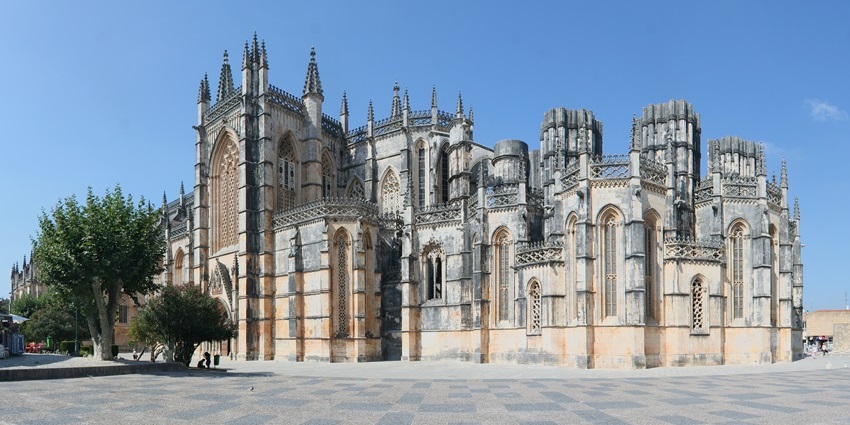
Photo: Ingo Mehling / Wikimedia Commons
Built to commemorate the Portuguese victory at the Battle of Aljubarrota in 1385, Batalha Monastery is a Gothic and Manueline wonder. The intricate details, including the Unfinished Chapels and royal tombs, tell stories of devotion, nationalism, and art. It symbolises national pride and showcases architectural brilliance. Visitors leave inspired by its spiritual grandeur and the resilience of a nation etched in stone and stained glass.
Distance From Fatima: Approximately 20 km
Places To Eat: Veloce, Vintage Restaurante, Restaurante Burro Velho
2. Jerónimos Monastery
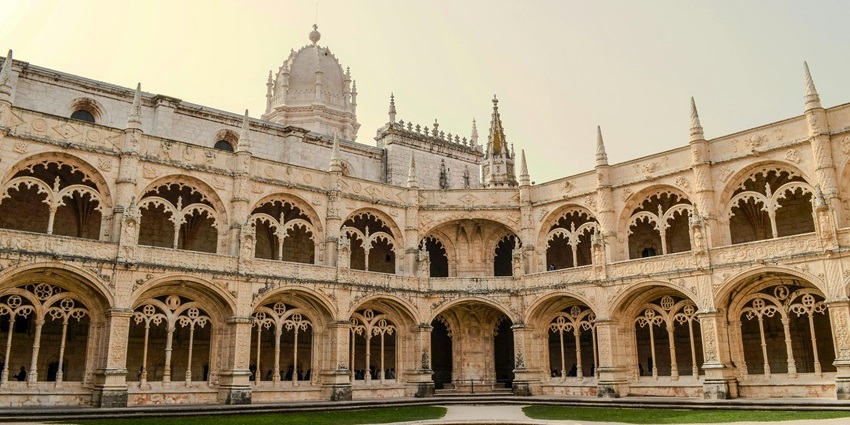
Located near Belem Tower, Jerónimos Monastery honors explorer Vasco da Gama and Portugal’s seafaring past. This 16th-century marvel showcases elaborate cloisters and grand arches in the Manueline style. Housing tombs of prominent figures, it represents the height of Portugal’s Golden Age. Visitors can wander through its peaceful halls, learning about the nation’s monastic and exploratory history amid stunning limestone craftsmanship.
Distance From Lisbon Airport: 13 km
Distance From Belem Tower: 1 km
Places To Eat: Restaurante A Padaria Portuguesa, Darwin’s Café, O Prado
3. Castelo De São Jorge
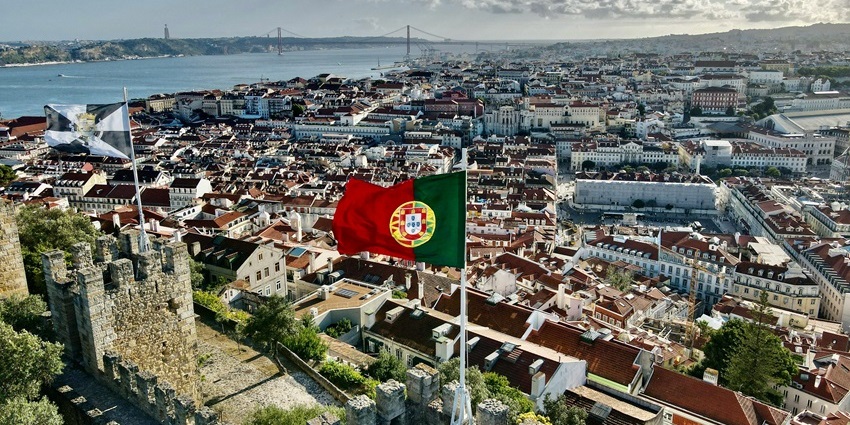
Photo: Mylo Kaye / Pexels / Image For Representation Only
Towering above Lisbon, this Moorish castle dates back to the 11th century. It played a strategic role in defending the city and now offers panoramic views over red rooftops and the Tagus River. Visitors explore ancient walls, towers, and archaeological ruins. The castle’s long history, from Islamic rule to Portuguese conquest, makes it a symbolic site of resilience and change in Lisbon’s urban evolution.
Distance From Lisbon Airport: 10 km
Distance From Rossio Square: 1.5 km
Places To Eat: Chapitô à Mesa, Zambeze Restaurante, Cantinho do Avillez
4. Convent Of Christ
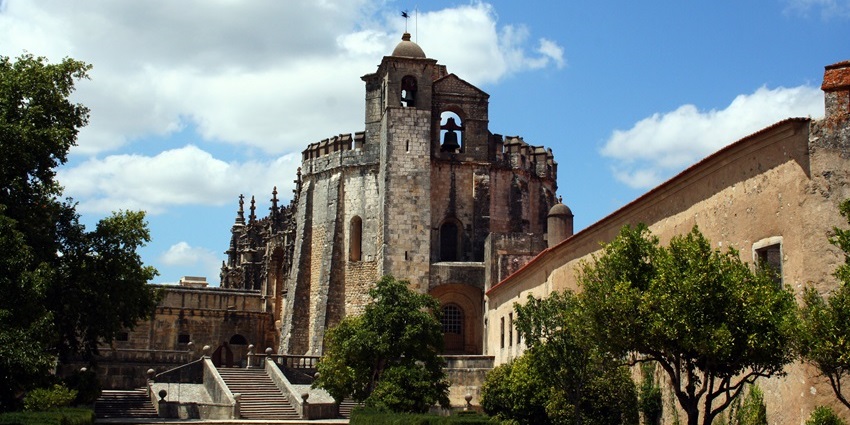
Photo: Ptahh / Wikimedia Commons
A masterpiece of Gothic, Manueline, and Renaissance styles, the Convent of Christ in Tomar was built by the Knights Templar. It features an iconic round church, lush cloisters, and fortified walls. This architectural gem illustrates the evolution of Portuguese religious and military history. Its symbolic carvings and spiritual atmosphere transport visitors back to the age of crusaders, offering a profound historical and aesthetic experience.
Distance From Tomar: 1.9 km
Places To Eat: O Tabuleiro, Taverna Antiqua, Restaurante Sabores Ao Rubro
5. Pena Palace
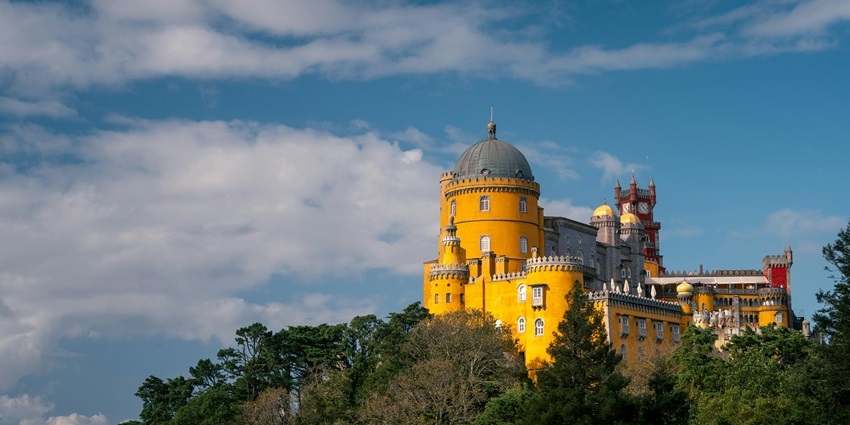
Photo: Dmitry Voronov / Pexels
Perched high in the Sintra hills, Pena Palace is a Romanticist castle commissioned by King Ferdinand II in the 19th century. With vibrant colors and whimsical designs, it blends Gothic, Moorish, and Renaissance elements. Surrounded by lush gardens, the palace embodies artistic freedom and royal vision. It offers sweeping views and interiors filled with regal opulence, drawing visitors into a fairytale world of Portuguese nobility.
Distance From Sintra Town Center: 3 km
Places To Eat: Tascantiga, Cantinho Gourmet, Bacalhau na Vila
6. Roman Temple Of Évora
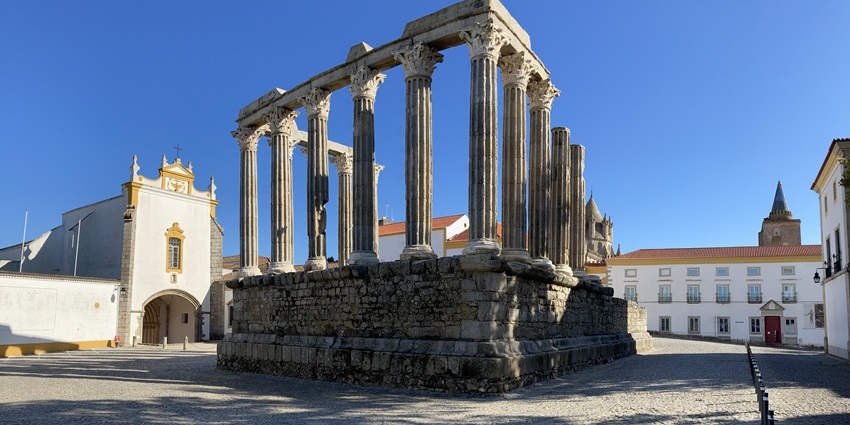
Photo: Dudva / Wikimedia Commons
This well-preserved Roman temple, dating to the 1st century AD, stands in the center of Évora. Known as the Temple of Diana, it represents Portugal’s Roman heritage. Surrounded by other historic buildings in a UNESCO World Heritage-listed city, the site offers a glimpse into ancient religious life. The surviving Corinthian columns and tranquil setting make it a striking symbol of the longevity of classical architecture in Iberia.
Distance From Central Évora: 2.1 km
Places To Eat: Fialho, Café Alentejo, Taberna Tí José da Évora
7. Alcobaça Monastery
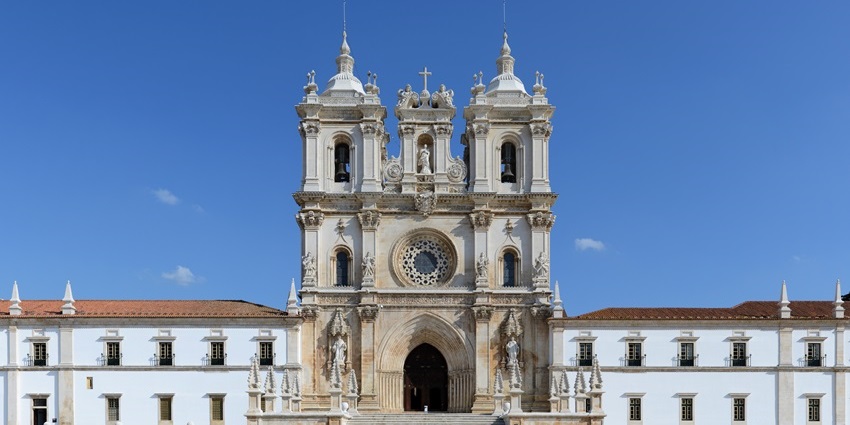
Photo: Alvesgaspar / Wikimedia Commons
Founded in the 12th century, Alcobaça Monastery is a Cistercian masterpiece and one of Portugal’s first Gothic buildings. Its austere beauty and monumental scale reflect the spiritual discipline of the time. Inside lie the tombs of King Pedro and Inês de Castro, whose tragic love story is etched into Portuguese lore. Visitors admire the vaulted ceilings, cloisters, and romantic legends that breathe life into its stone walls.
Distance From Nazaré: 20 km
Places To Eat: Restaurante Antonio Padeiro, Sabores da Geninha, Restaurante Mimo d’Alcobaça
8. University Of Coimbra
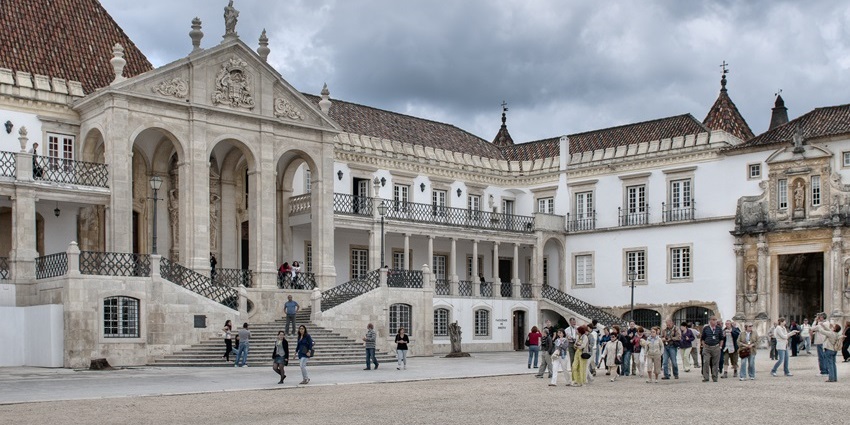
Photo: Mgm105 / Wikimedia Commons
Established in 1290, the University of Coimbra is one of Europe’s oldest universities. It features the baroque Joanina Library, grand lecture halls, and ceremonial halls full of academic tradition. Students in black capes add to the old-world charm. The institution played a vital role in shaping Portuguese intellectual life, and its architecture and rituals continue to reflect centuries of scholarly excellence and cultural influence.
Distance From Coimbra City Center: 2.6 km
Places To Eat: Loggia, Restaurante Zé Manel dos Ossos, Solar do Bacalhau
9. Silves Castle
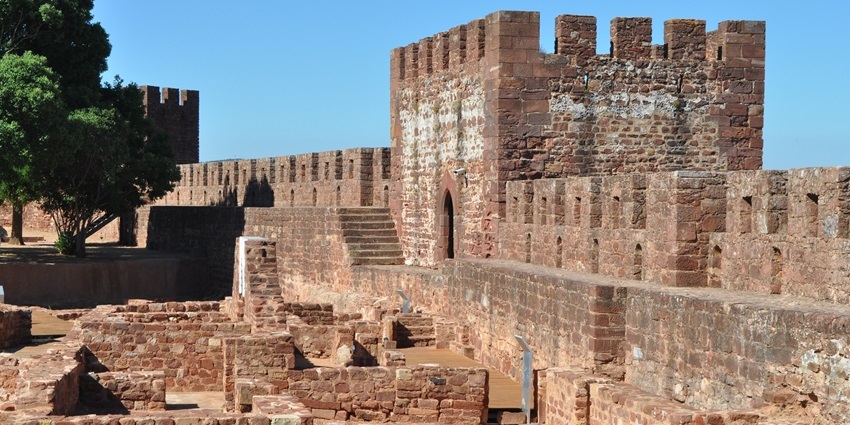
Photo: Lídia Maria Faria / Wikimedia Commons
Once the Moorish capital of the Algarve, Silves Castle is a striking fortress built of red sandstone. Its walls, towers, and cisterns offer insights into Islamic architecture and defense techniques. With commanding views over the town, it reflects the turbulent history between Muslim and Christian forces in medieval Portugal. The castle is a well-preserved emblem of the region’s layered cultural past and strategic importance.
Distance From Silves Town Center: 0.45 km
Places To Eat: Restaurante Marisqueira Rui, Cafe Inglês, Churrasqueira Valdemar
10. Belem Tower

Photo: Letícia Fracalossi / Pexels
Belem Tower in Lisbon is a striking example of Manueline architecture, built in the early 1500s to defend the city. It served as both a fortress and a ceremonial gateway for Portuguese explorers setting sail. Featuring carved stonework, spiral staircases, and panoramic views, the tower commemorates Portugal’s maritime legacy during the Age of Discovery. It remains one of the country’s most iconic and photographed historical landmarks.
Distance From Lisbon Airport: 14 km
Distance From Central Lisbon: 7 km
Places To Eat: Pasteis de Belem, Nunes Real Marisqueira, Enoteca de Belém
Historical places in Portugal offer a captivating journey through centuries of empire, maritime exploration, and artistic triumph. From medieval castles perched on rugged cliffs to Roman temples and awe-inspiring monasteries, each site tells a unique story of resilience, faith, and cultural evolution. Whether you’re tracing the footsteps of explorers or admiring Manueline architecture, Portugal’s heritage will leave you inspired. Book your trip today with TripXL to wander through grand palaces and ancient ruins that reflect Portugal’s history.
Cover Photo: José Antonio Otegui Auzmendi / Pexels


 WhatsApp
WhatsApp
 Twitter
Twitter









